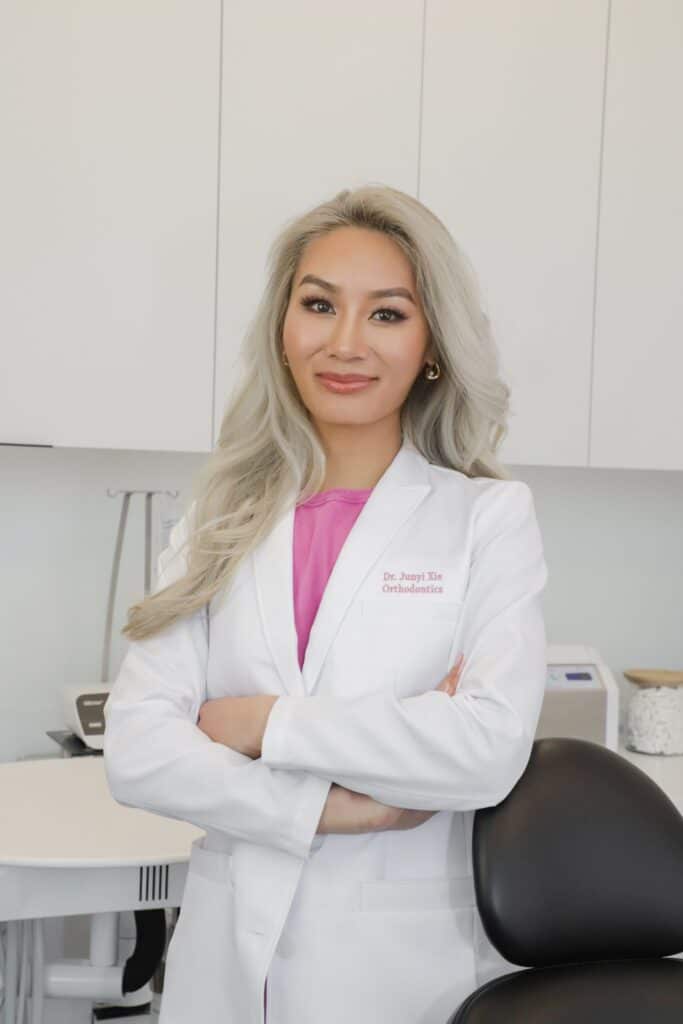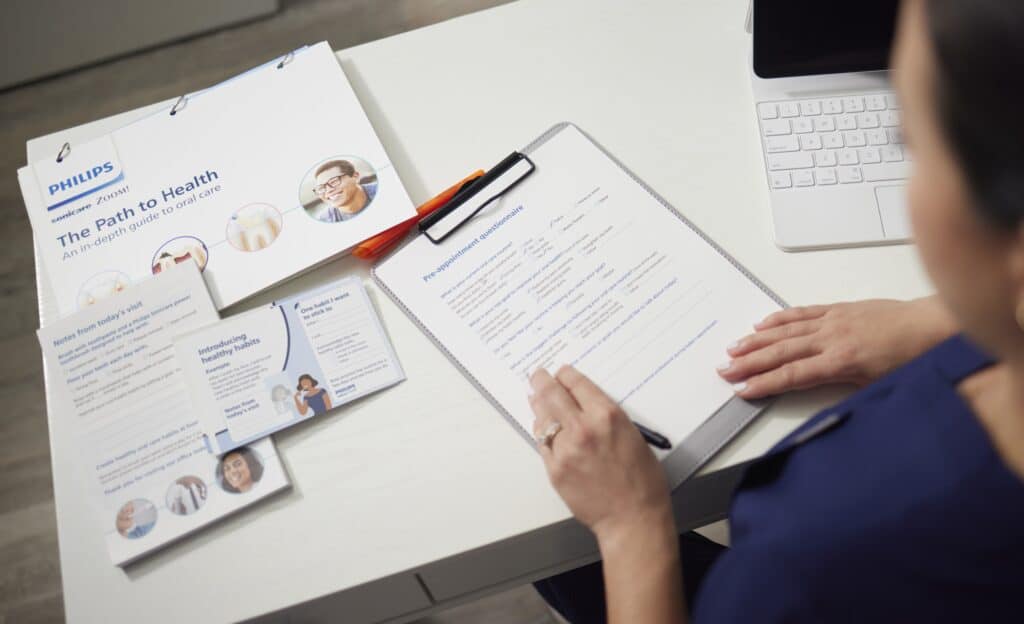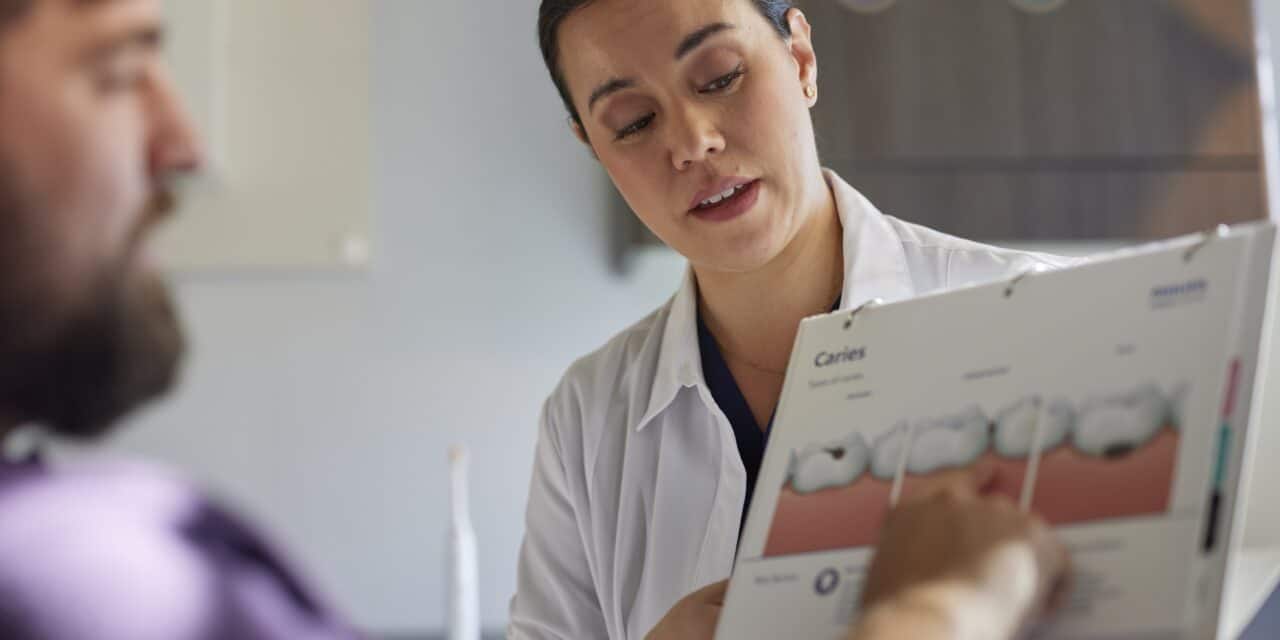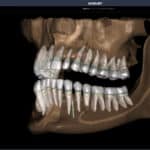Dr Junyi Xie shares how orthodontists can use education and communication tools to ease patient anxiety and reduce practice stress.
Dental anxiety continues to be a major barrier to care, with more than one-third of Americans reporting fear of dental visits—often leading to missed appointments and delayed treatment. At the same time, orthodontic providers are facing increased stress and burnout, as staffing challenges put pressure on both patient communication and practice efficiency. For orthodontists, the challenge lies in delivering care that supports the emotional well-being of patients while also protecting the wellness of the clinical team.
Junyi Xie, DDS, a board-certified orthodontist practicing in Irvine, Calif, has seen firsthand how education-based communication and digital tools can improve both patient experience and practice flow. She spoke to Orthodontic Products to discuss how orthodontic teams can use chairside strategies and resources from Philips to build trust, improve compliance, and reduce stress—for everyone involved.

Orthodontic Products: Dental anxiety affects more than a third of Americans and often leads to missed appointments and long-term oral health issues. From your perspective, how can orthodontic practices better recognize and respond to patient fear or shame in a clinical setting?
Junyi Xie, DDS: I think it starts with all team members being on the same page about creating a safe environment for every patient, beginning with their very first visit. Things like asking questions about patients’ previous experiences, explaining procedures clearly using simple language or analogies, and allowing time for questions are key to helping patients build trust with us. Philips offers amazing educational materials and visuals—such as the Path to Health toolset— designed to ease patient concerns. These resources help practices create an environment where fear and shame are replaced with understanding and empowerment.
OP: How can orthodontists strike a balance between encouraging positive oral health behaviors and avoiding added pressure or guilt for patients who may already feel overwhelmed?
Xie: For orthodontists, patient compliance is the biggest factor in achieving successful treatment outcomes. We often have to walk a fine line between motivating patients and not overwhelming them with too much pressure. The key is making sure patients understand the why behind what we’re asking them to do. When they understand, it becomes something they want to do for themselves—which leads to better compliance and less pressure. Philips patient education tools include helpful videos and visuals that clearly explain both the why and the how, making it easier for us to communicate with patients in a supportive way.

OP: When it comes to supporting patients’ mental well-being alongside their oral health, what role do educational tools and chairside communication strategies play in creating a more compassionate patient experience?
Xie: Communication is the most important aspect of a compassionate patient experience. When we use visual aids to simplify complex concepts, it gives patients confidence and a sense of control over their oral health. Seeing something explained—rather than just hearing it—adds clarity and helps reduce anxiety caused by uncertainty. Philips evidence-based resources definitely contribute to both the mental and oral well-being of our patients.
We’re integrating digital education platforms that patients can scan and take home with them—like take-home notes as part of the Path to Health toolset—summarizing everything we discussed during their visit. In an environment of heightened anxiety and staffing shortages, this helps bridge gaps when appointment times are limited; it also continues to empower patients outside the clinic. This solution reduces stress on both sides of the chair!
OP: Looking ahead, how is Philips evolving its approach to wellness—both patient-facing and practitioner-focused—to meet the shifting needs of today’s orthodontic practices?
Xie: Philips has been developing patient-facing tools that take into account emotional as well as physical health. As demands on orthodontic staff continue to grow, these solutions help us save time, reduce stress, and improve communication. Ultimately, they help us create a clinical environment that feels supportive, connected, and centered on human care—not just clinical tasks. OP
Photos: Philips










